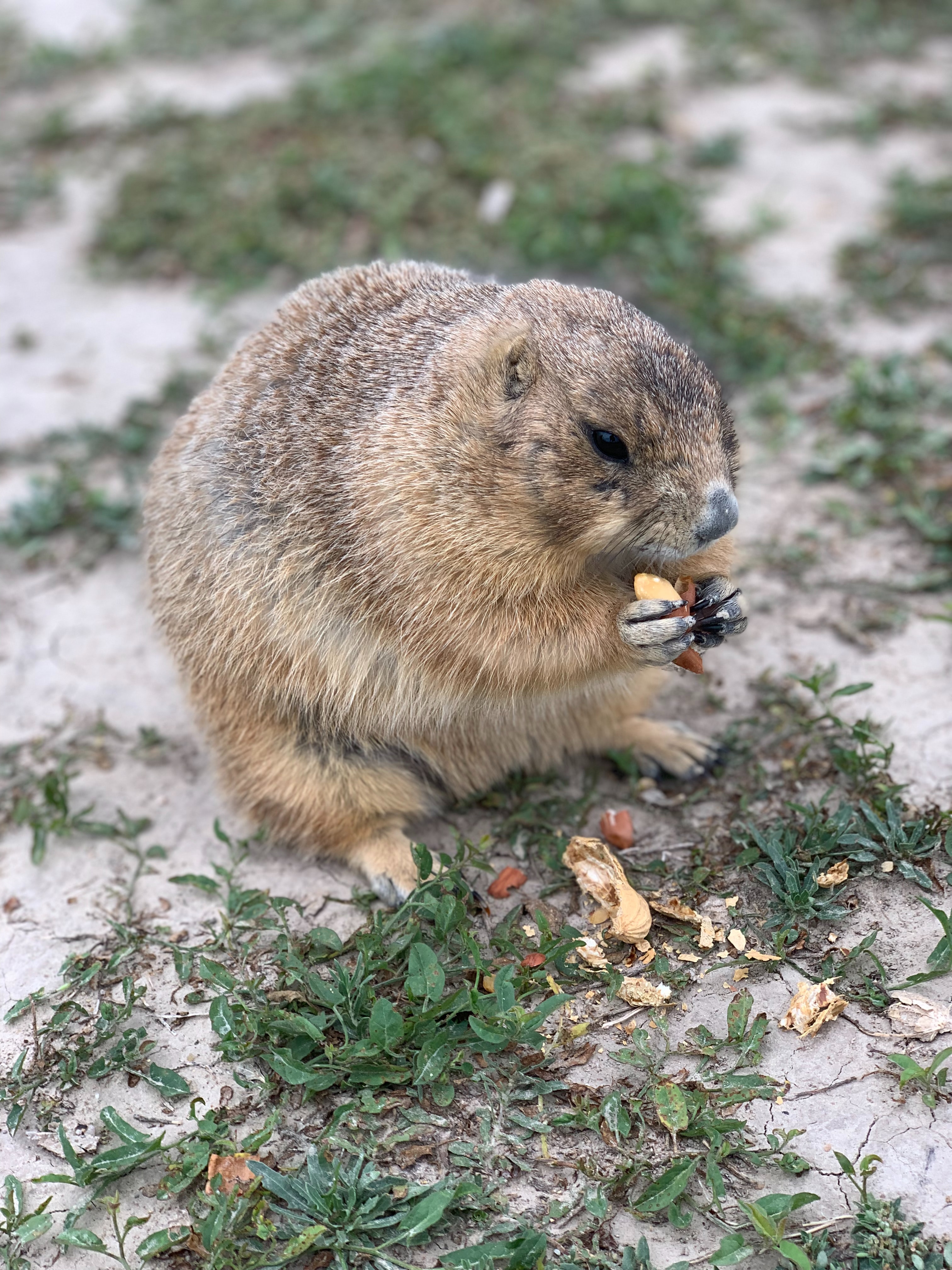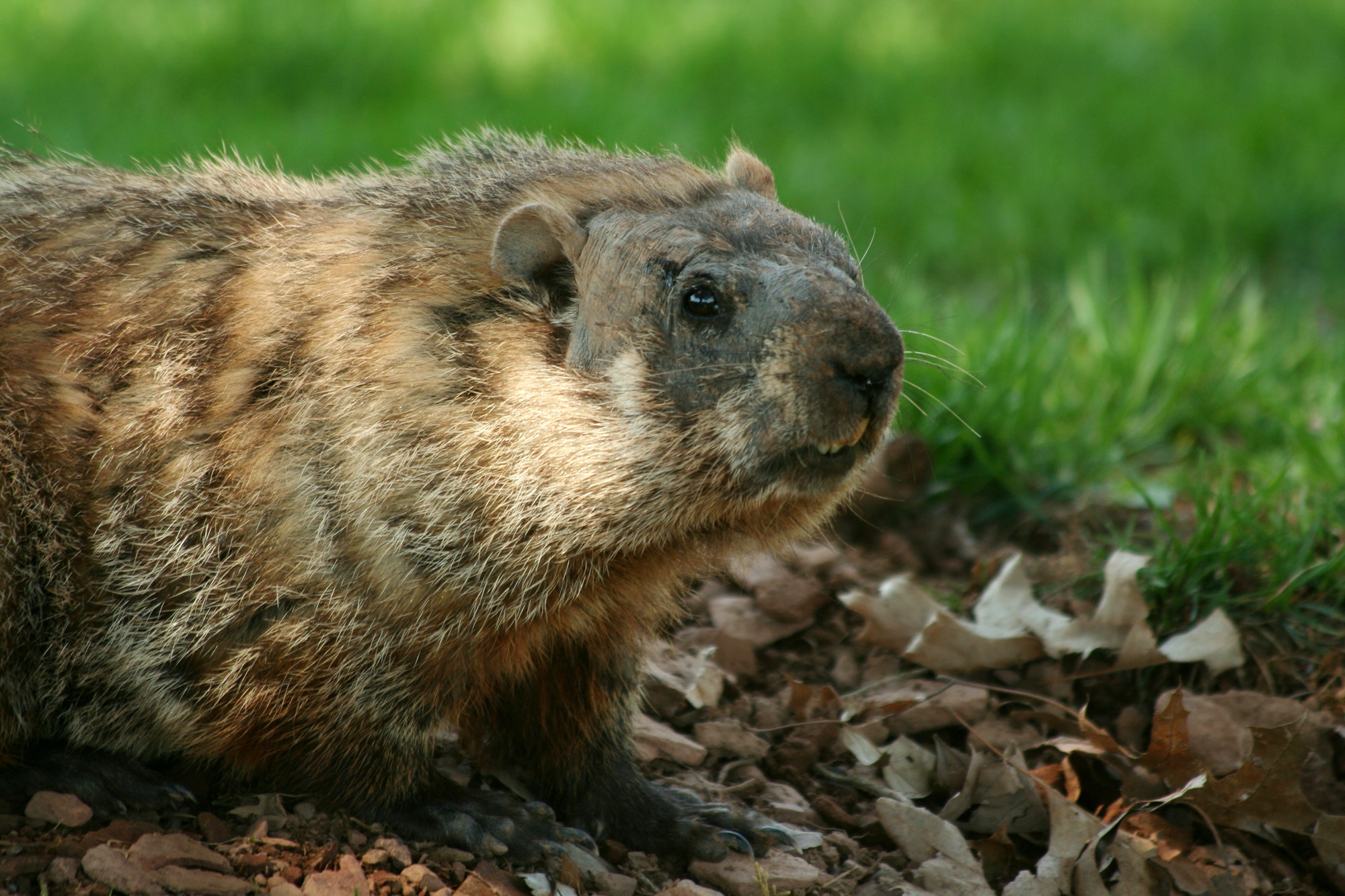What Are Woodchucks?
“How much wood could a woodchuck chuck if a woodchuck could chuck wood?” This common tongue twister gives people the impression that like beavers they “chuck” wood, but unlike their furry cousins they prefer dry land. Many people make the mistake of thinking that Groundhogs and woodchucks are two different animals, but what people may not realize is that they are actually the same rodent. They are a large rodent belonging to the marmot family that are most closely related to squirrels.
Woodchucks average 20 to 27 inches long and weigh between 5 and 15 pounds in size. They have short, strong legs; coarse, grizzled, gray-brown fur; small ears; a short, bushy tail; and curved claws.

Woodchucks can be found throughout North America in both the Western and Eastern Regions living in burrows in the ground.They love to dig and their tunnels can range up to sixty five feet and have multiple levels.
They also include a multitude of chambers that each serve a specific purpose such as, nesting waste, or food storage. These intricate tunnels give them a safe haven from the predators such as coyotes, foxes, weasels, badgers, hawks, and eagles. These tunnels also come in handy when it comes time to hibernate as many mammals do. Unlike some mammals, Woodchucks do not spend their entire hibernation period in a deep sleep.
Rather, they lower their body temperatures to an all-time low for a week or so at a time. They then raise that temperature for a few days before it drops again. To prepare for hibernation like many animals, these unique animals increase their food intake to fatten themselves up for the winter.

They are most active during the day in the summer. Wood chucks commonly feed in the early morning and the late afternoon, spending the rest of the day sleeping or bathing in the sun. For the most part they are vegetarians though they occasionally feed on bugs such as grasshoppers and other large insects. Their food of choice is grasses, clover, berries, and produce. In the mid summer you can see them munching of juicy ripe blackberries or invading your garden to curb their hunger.
Woodchucks do not mate until their second year and have an average life span of five to six years. Males and females will breed in March or April, then after which they have no contact with each other. In about thirty-two days the female will give birth to a litter of kits. For them the average litter rages form four to six kits The female will raise these young alone. In about four weeks after they are born the young will start to open their eyes then be weaned by six. They will slowly venture out of the burrow with their mother until the fall where they venture off to find their very own territory.
Since Woodchucks eat farmers’ produce and crops, can damage the landscape with their tunnels, and attack pets in their chosen territory they are often seen as a menace. Many of these farmers will use the more traditional routes of hunting or trapping these animals to get rid of them, but those are not the only option. Yes, they may be the easiest or the most convenient, but you also can prep your property before and after an invasion to deter future attacks. Eliminate wood piles and other places where groundhogs would like to hide and nest. Taller vegetation is their chosen path to travel so keep undergrowth and grass cover low to deter them.They also have a very strong sense of smell so you can spray a spicy or peppery scent mix around your garden. These methods of determent are key to keeping woodchucks away after you eliminate the current problem or before a problem shows itself.
So woodchuck, groundhog, or whistle-pig whatever your name of choice is they are all the same. They are amazing creatures that play a part in our ecosystem with pollination, insect control, and the spread of native plants. They are unique animals that many underestimate or do not understand. So before you assume that a “ Woodchuck could chuck wood” do a little research and learn who that furry guy eating all of your green beans really is.








